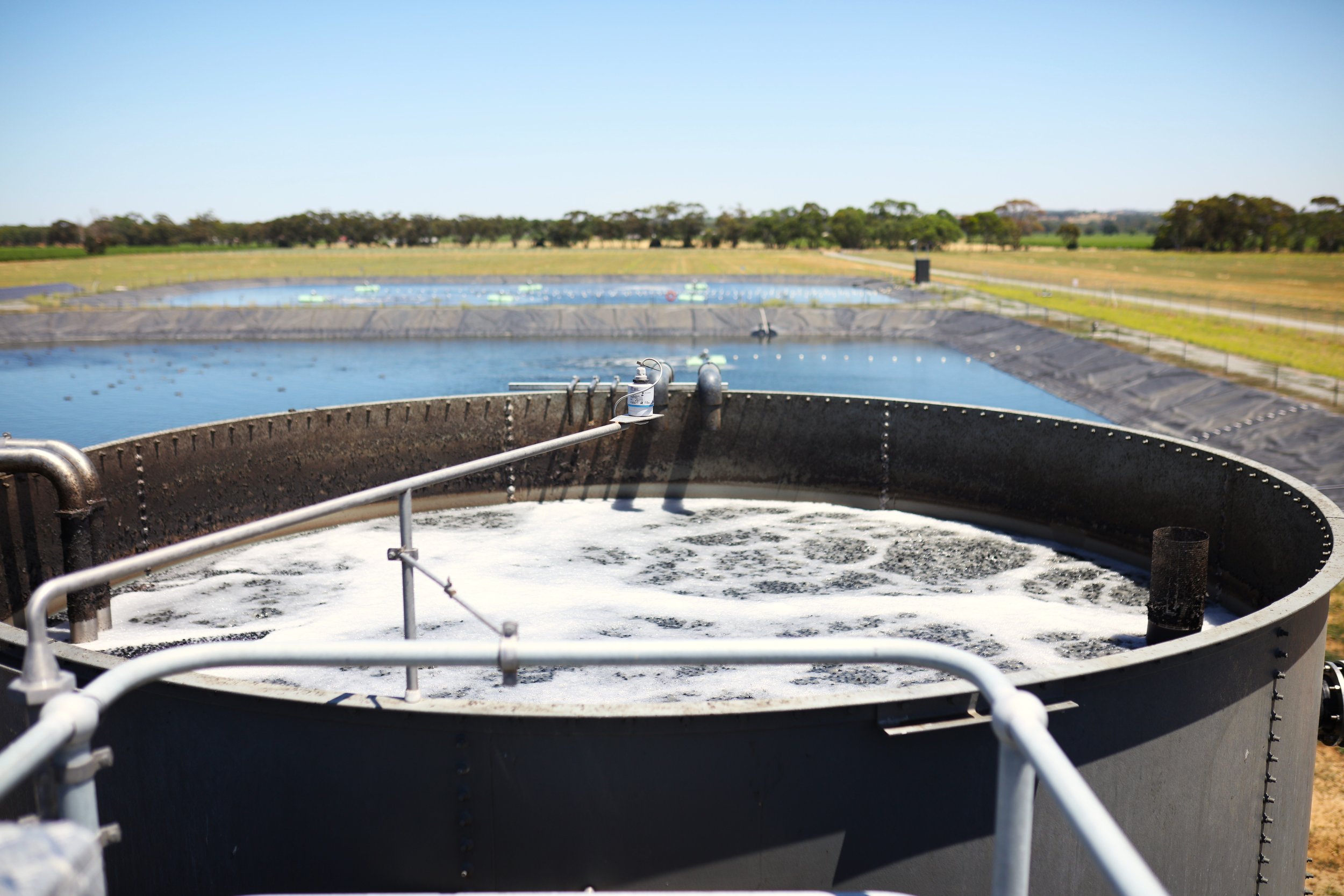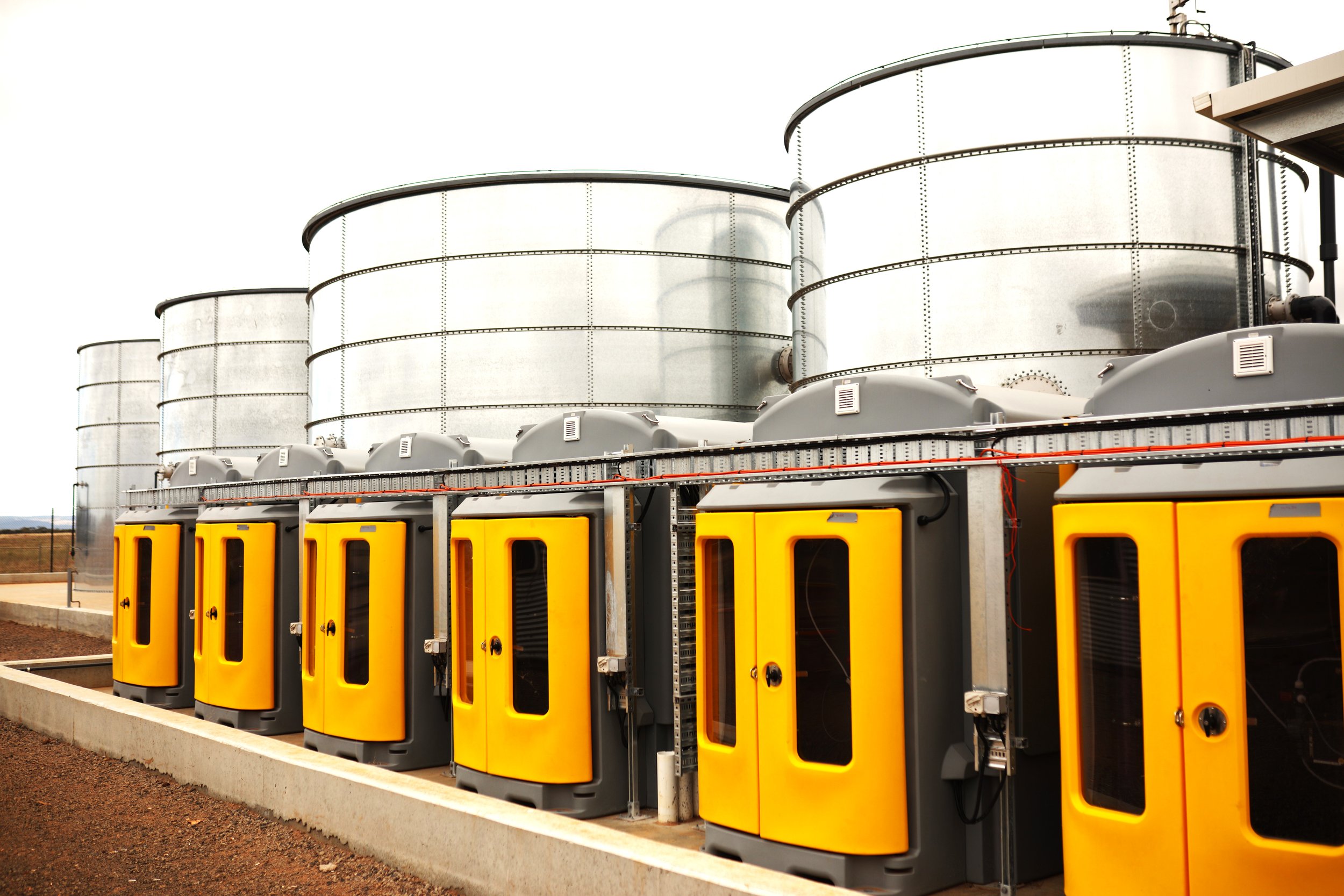
Cost Comparison: MBBR vs Alternative Wastewater Treatment Methods (MBR, SBR, Lagoon Aeration)
For Meat Processors, Food & Beverage Processors and Rendering Sites
Contents
Section 1: Factors Influencing Wastewater Process Selection
1.1 Effluent Quality Requirements
1.2 Plant Capacity
1.3 Footprint and Space Availability
1.4 Operational Flexibility and Control
1.5 Operational and Maintenance Requirements
Section 2: Cost Comparison - MBBR vs Alternative Wastewater Treatment Methods (MBR, SBR, Lagoon-Based Treatment)
2.1 Capital Costs
2.2 Operational Costs
2.3 Maintenance and Labour Costs
Section 3: Making an Informed Decision
3.1 Compliance and effluent quality
3.2 Scalability and Future Expansion
3.3 Robustness and Reliability
3.4 Sustainability and Environmental Impact
Conclusion
In your search for the best wastewater treatment solution for your site, you may have come across MBBR (Moving Bed Biofilm Reactor) and wondered how it compares to traditional methods like MBR (Membrane Bioreactor), SBR (Sequential Batch Reactor), and lagoon-based treatment.
In this comprehensive guide, we will provide you with a detailed cost comparison, empowering you to make an informed decision for your plant.
When considering wastewater treatment options, cost is undoubtedly a crucial factor. By understanding the cost implications of different methods, you can allocate your budget effectively and optimize your return on investment.
However, it's important to remember that cost alone should not be the sole determining factor in your decision-making process. Factors such as treatment efficiency, space requirements, regulatory compliance, and ease of operation should also be carefully considered.
With that said, let's dive into the cost comparison between MBBR and traditional wastewater treatment methods. We will delve into the cost comparison between Moving Bed Biofilm Reactor (MBBR) and alternative wastewater treatment methods commonly used in the industry, such as
Membrane Biofilm Reactor (MBR)
Sequential Batch Reactor (SBR)
Lagoon-based treatment.
Section 1: Factors Influencing Wastewater Process Selection
Before we dive into the cost comparison, let's briefly discuss the factors that influence the selection of a wastewater treatment method for your plant:
1.1. Effluent Quality Requirements
Consider the specific effluent quality standards you need to meet based on local regulations and any additional standards set by your industry. These requirements will influence the choice of treatment method.
1.2. Plant Capacity
Assess your processing plant's capacity, including the volume of wastewater generated, to determine the scalability and suitability of different treatment methods.
1.3. Footprint and Space Availability
Evaluate the available space within your facility. Some treatment methods require more land area or additional infrastructure, which can impact your overall costs.
1.4. Operational Flexibility and Control
Understand the level of control and flexibility you need in managing your wastewater treatment process. Some methods offer greater control and adaptability to handle fluctuations in wastewater characteristics.
1.5. Operational and Maintenance Requirements
Consider the labor, expertise, and maintenance costs associated with each treatment method. Efficient and cost-effective operations are crucial for long-term sustainability.
Section 2: Cost Comparison - MBBR vs Alternative Wastewater Treatment Methods
Now, let's explore the cost comparison between MBBR and alternative wastewater treatment methods, focusing on MBR, SBR, and lagoon-based treatment. We will provide you with practical benchmarks, tips, and formulas to help you evaluate the financial implications of each option.
2.1. Capital Costs
a) MBBR: The capital costs of implementing an MBBR system typically include equipment such as tanks, biofilm carriers, diffusers, blowers, and control systems. On average, the capital cost for an MBBR system in a food and beverage processing plant can range depending on the treated wastewater capacity and wastewater characteristics and requirements.
b) MBR: MBR systems involve additional costs due to the membrane modules and associated equipment. The capital cost for an MBR system can be relatively more expensive compared to MBBR, however it is important to note the treatment effluent quality is generally higher.
c) SBR: Sequential Batch Reactor systems typically have moderate capital costs, falling between MBBR and MBR.
d) Lagoon-Based Treatment (standard aerobic): Lagoon systems generally have lower capital costs compared to the other methods. However, it's important to consider factors such as land availability and the need for additional treatment steps for effluent polishing. The capital cost for a lagoon-based treatment system can range depending on the lagoon size requirement, dictated by retention time.
IMPORTANT NOTE: Sometimes lagoons are seen as the “cheaper solution” however anyone considering lagoons as a solution must consider the reduced treatment capability of a traditional aerated lagoon, the civil and real estate cost of implementing lagoons, and potential odour risks.
2.2. Operational Costs
a) Energy Consumption: Energy costs form a significant portion of the operational expenses. MBBR systems generally have lower energy requirements compared to MBR systems due to the absence of membranes. SBR and lagoon-based treatment methods also tend to consume less energy. On average, the energy consumption for an MBBR system can range from $X to $X per cubic meter of treated wastewater.
b) Chemical Usage: MBBR systems usually require minimal chemical usage, contributing to lower operational costs. In contrast, MBR systems may involve additional chemical dosing for membrane cleaning and fouling prevention, leading to increased expenses.
c) Sludge Handling and Disposal: The management of sludge generated during the treatment process is another cost consideration. MBR and SBR systems tend to produce more concentrated sludge, requiring higher disposal costs compared to MBBR. Lagoon-based treatment methods generally have lower sludge handling costs.
2.3. Maintenance and Labour Costs
a) MBBR: Routine maintenance for MBBR systems primarily includes periodic inspections, monitoring of biofilm carriers, and cleaning if necessary. The maintenance costs for MBBR are generally lower compared to MBR due to the absence of membranes.
b) MBR: Membrane maintenance, replacement, and cleaning constitute a significant portion of the operational costs for MBR systems. The expertise required for membrane handling can also contribute to higher labor costs.
c) SBR: SBR systems generally have moderate maintenance and labor costs, similar to MBBR, but may require additional maintenance for mechanical equipment such as pumps and mixers.
d) Lagoon-Based Treatment: Lagoon systems typically have lower maintenance costs, primarily involving routine inspections, occasional desludging, and maintaining vegetation if applicable.
Section 3: Making an Informed Decision
To make an informed decision, consider the following key considerations beyond costs:
3.1. Compliance and effluent quality: Evaluate how well each treatment method can meet the specific effluent quality requirements, ensuring compliance with local regulations and industry standards.
3.2. Scalability and Future Expansion: Assess the scalability of each method to accommodate potential increases in wastewater generation as your plant grows. Consider the ease of expanding or modifying the treatment system.
3.3. Robustness and Reliability: Look for systems that can handle variations in wastewater characteristics and maintain stable treatment performance. Robust systems reduce the risk of disruptions and costly downtime.
3.4. Sustainability and Environmental Impact: Consider the sustainability aspects of each method, such as energy efficiency, chemical usage, and sludge management. Choose a method that aligns with your organization's environmental goals.
Conclusion
In this cost comparison guide, we have explored the financial implications of adopting different wastewater treatment methods, focusing on MBBR, MBR, SBR, and lagoon-based treatment. By considering the capital costs, operational expenses, and maintenance requirements, you can make a well-informed decision for your meat processing, food and beverage processing, or rendering site.
Remember, factors such as effluent quality requirements, plant capacity, space availability, operational flexibility, and maintenance considerations also play crucial roles in your selection process. Consult with wastewater treatment experts, such as Waterform, who have experience delivering ultraBiox biological wastewater solutions for the food and beverage processing industry, including MBBR systems.
By carefully evaluating these factors and weighing the costs against your specific requirements, you can choose the most suitable wastewater treatment method that ensures compliance, sustainability, and long-term success for your processing site.


